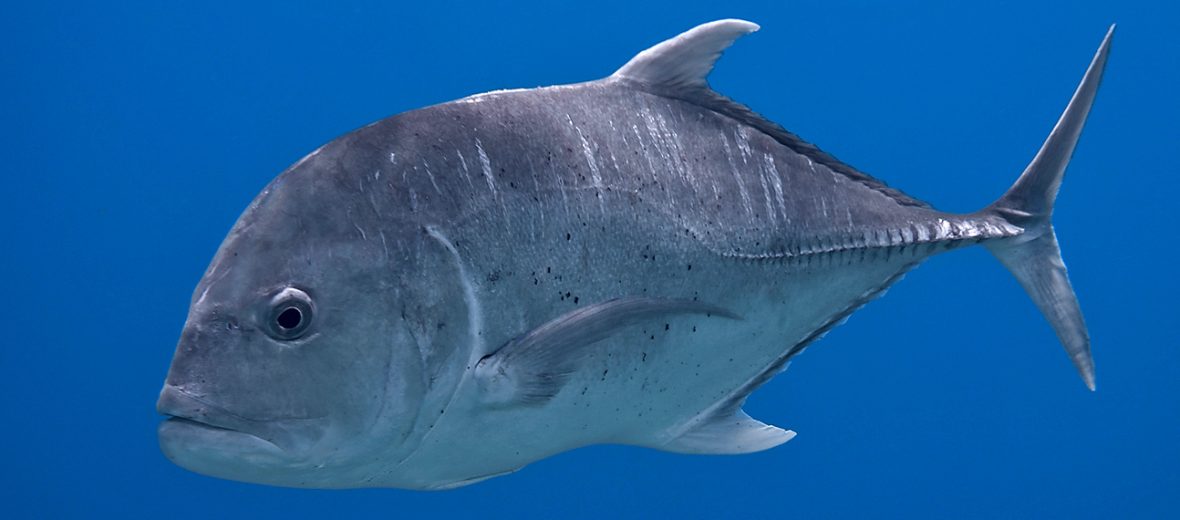
The giant trevally, aka barrier trevally, giant kingfish, lowly trevally, ronin jack, or ulua, can be found in the the tropical waters of the Indo-Pacific region, with a ranges stretching from South Africa in the west to Hawaii towards the east, as well as in the waters off Japan in the north, and down to Australia in the south. Even though they face the threat of overfishing, these fish are abundant and thus listed as Least Concern by the IUCN.
First the Stats…
Scientific name: Caranx ignobilis
Weight: Up to 176 lbs.
Length: Up to 6.5 feet
Lifespan: Up to 24 years
Now on to the Facts!
1.) Trevallies can tolerate not only saltwater but low salinity water, like coastal lakes and upper reaches of rivers.
2.) They prefer turbid water.
3.) These apex predators hunt singly and are only seen in schools during mating season.
4.) The preferred prey are other smaller fish, cephalopods, crustaceans, and molluscs. On occasions they will even leap from the water to catch birds.
5.) They typically follow sharks and monk seals and pick off escaping prey.
But wait, there’s more on the giant trevally!
6.) The trevally is an important species to commercial fisheries and as a game fish.
7.) Over 10,000 tons are taken annually by commercial fisheries, just in the Asian market alone.
Did you know…?
Ciguatera poisoning is possible from eating this fish species. Ciguatera poisoning is caused by the microalgae called Gambierdiscus toxicus. It can cause nausea, vomiting, and neurologic symptoms like tingling fingers and/or toes.
8.) In 1775, Swedish naturalist Peter Forsskål first described these fish.
9.) Females produce several thousand eggs each season.
10.) The larval fish occasionally utilize jellyfish as shelters.
But wait, there’s still more on the giant trevally!
11.) Various species of sharks prey on juvenile travallies.
12.) Adult trevallies have been recording ramming sharks and attacking them.
Now a Short Giant Trevally Video!
Be sure to share & comment below! Also, check out the Critter Science YouTube channel. Videos added regularly!
Want to suggest a critter for me to write about? Let me know here.
Photo credit: iNaturalist.



